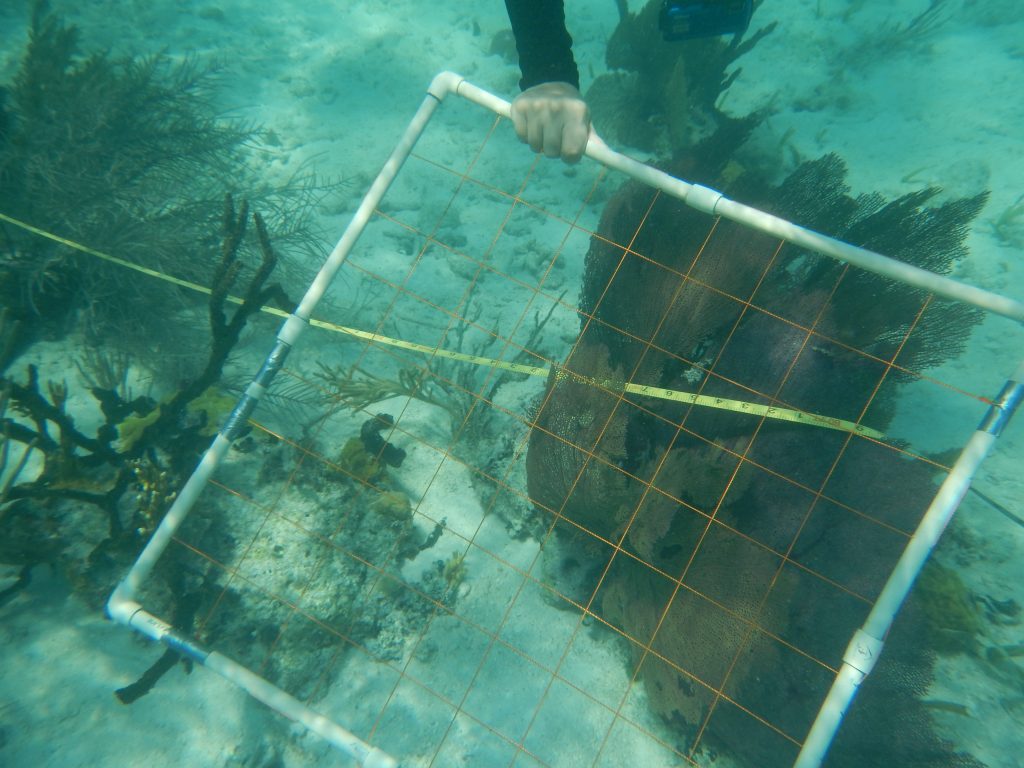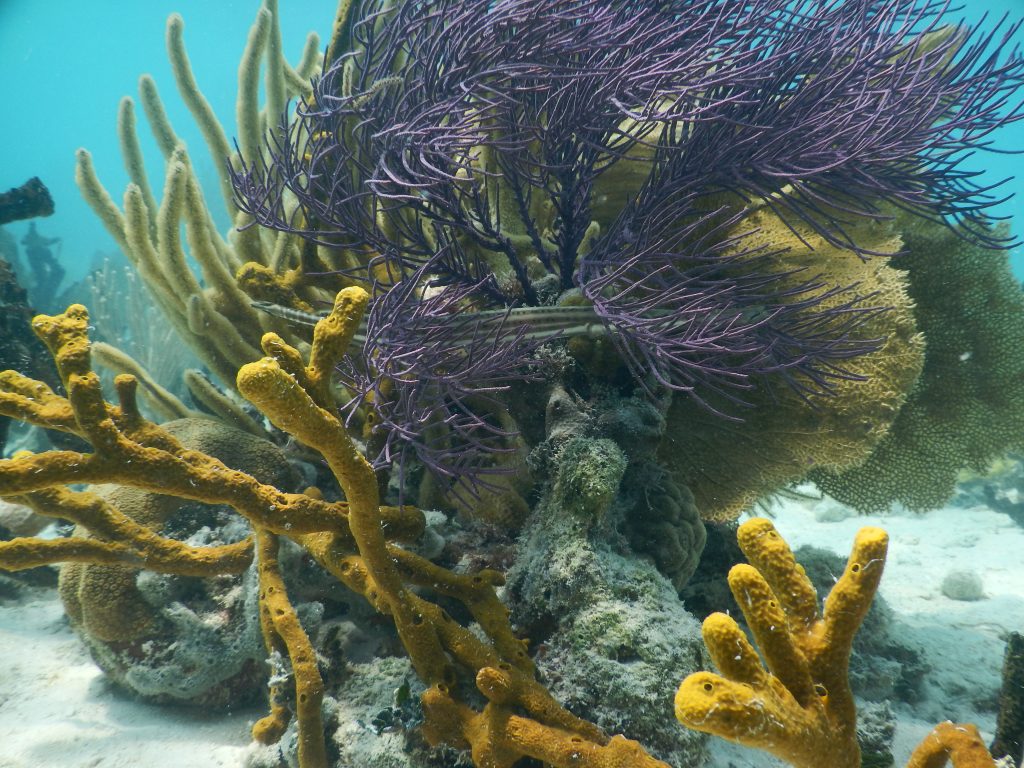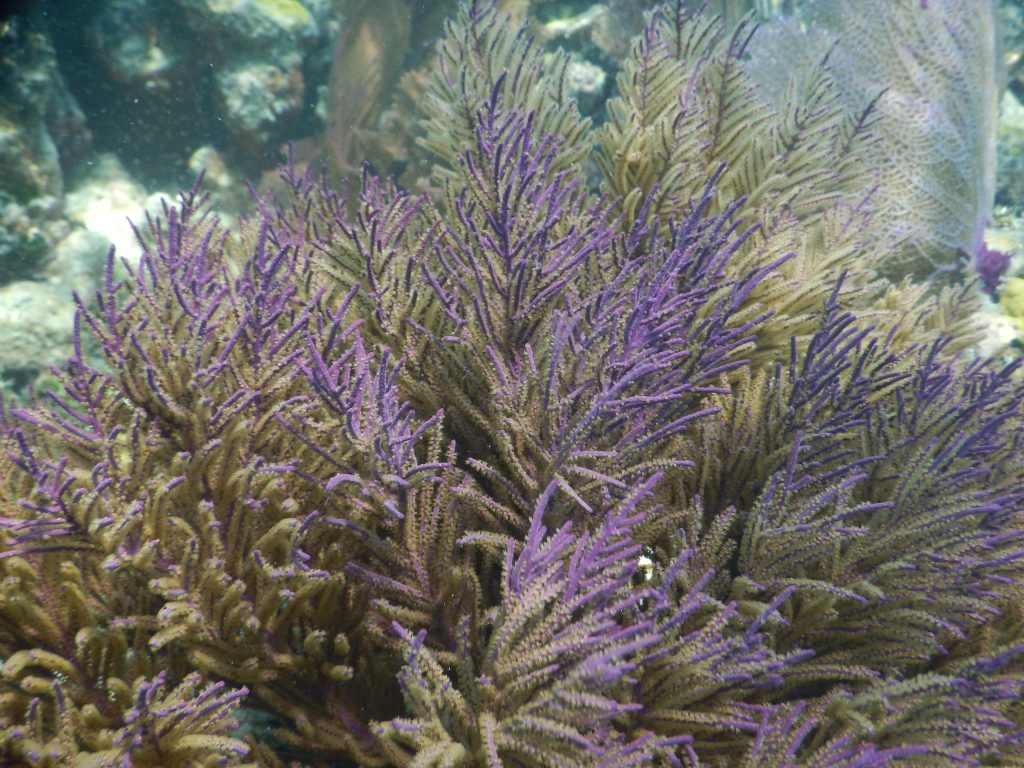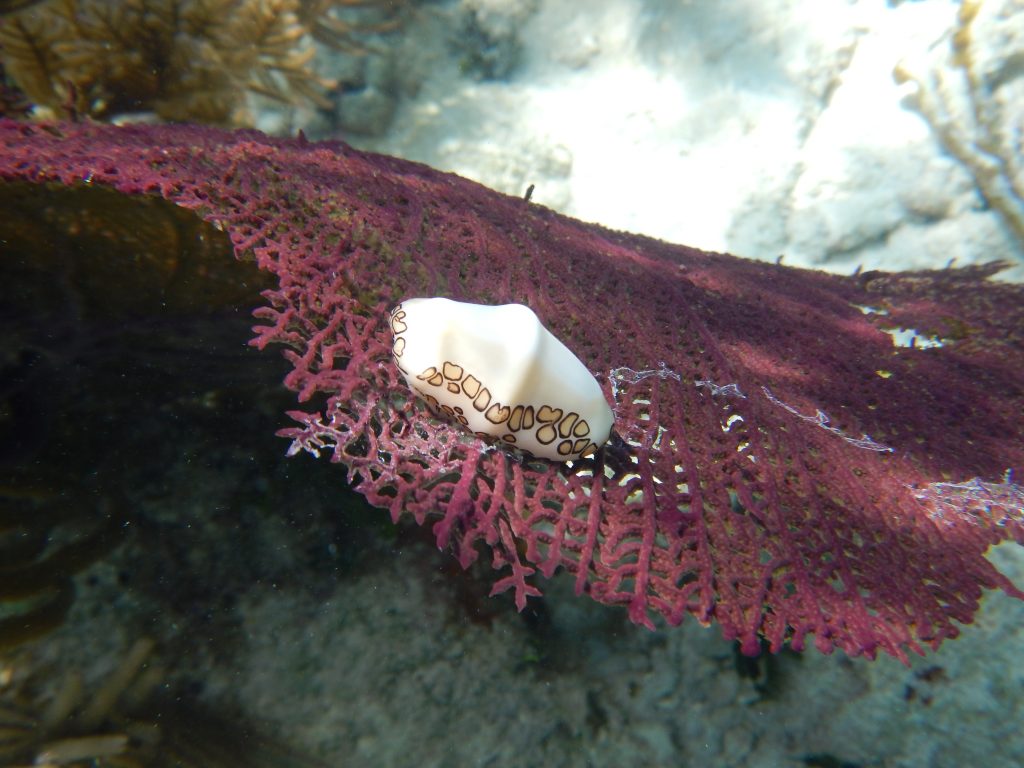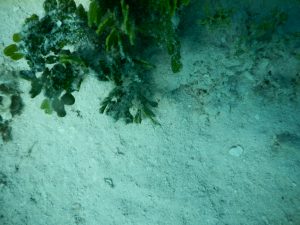I seriously can’t believe how much we get done in 1 day by getting up 3 hours early! We went to a non-MPA patch reef today to do transects the same way we did yesterday. Snorkeling has gotten much easier; I feel like I can kind of navigate gracefully and not flail around kicking things. I saw tons more algae in the non-MPA reef, mostly crunchy red coralline algae with short knobby branches covering the ground (not sure of species). We decided that might be because of increased human activity putting excess nutrients into the reef, or overfishing.


We then swam to a more reefy area to collect non-MPA urchins, which were much harder to find than yesterday’s. I may have seen the red algae Pterocladiella capillacea here (?):
Please enjoy some Finding Nemo-esque shots of the reef!
On the boat back to Glover’s we played with several stragglers in our urchin bucket, including this brittle star.
After lunch we quickly whipped up a poster using our amazing rustic math skills, complete with slides…
Then we had lectures including a talk on Belizean culture and history by Javi—this was really interesting, it makes me wish we had more time to explore the cities and ancient ruins in Belize. He explained why there are so many Chinese people here—they were brought as servants in the 1830’s and also immigrated in the 1980’s, but didn’t really integrate into creole Belizean culture. But now the younger generation of Chinese are starting to mix with other ethnic groups by going to school with them, eg having creole boyfriends. That was crazy to me, imagining growing up in a Chinese community within Belize and integrating into the surrounding culture. Hopefully I can find a Chinese person and ask them before we leave.







